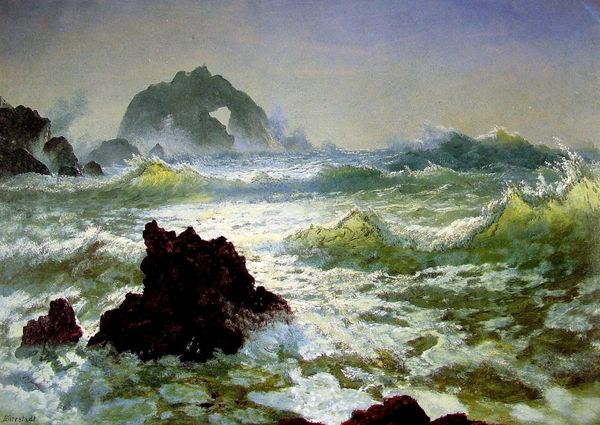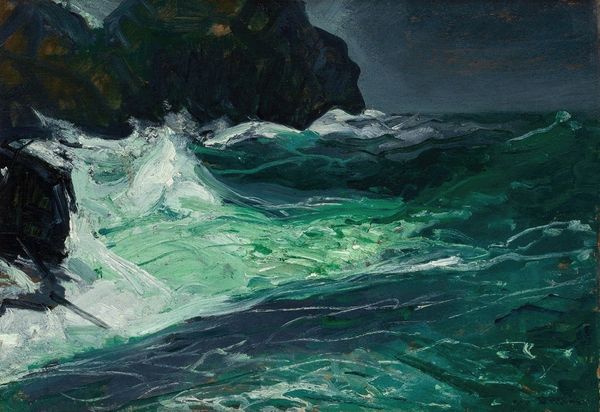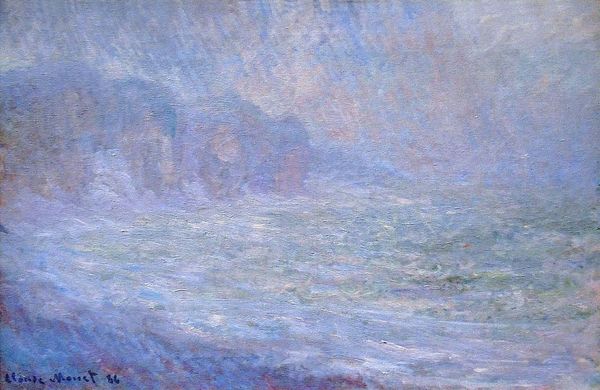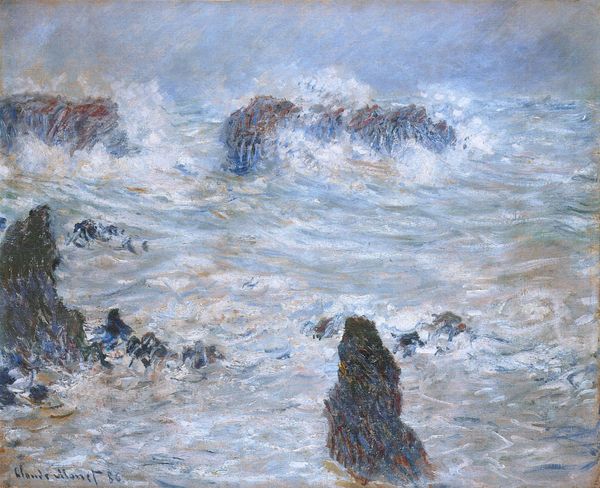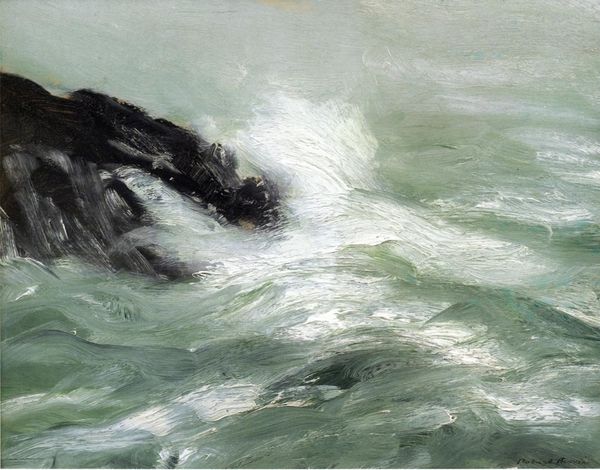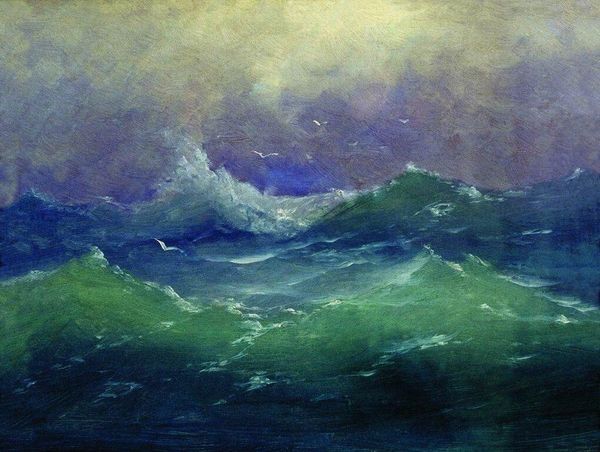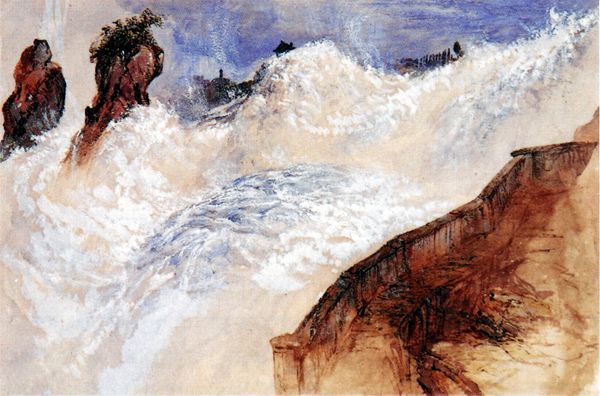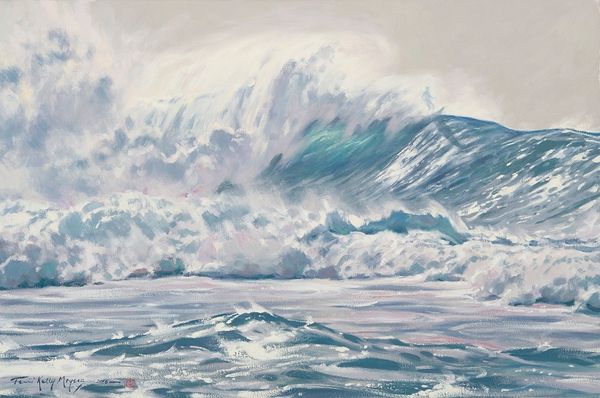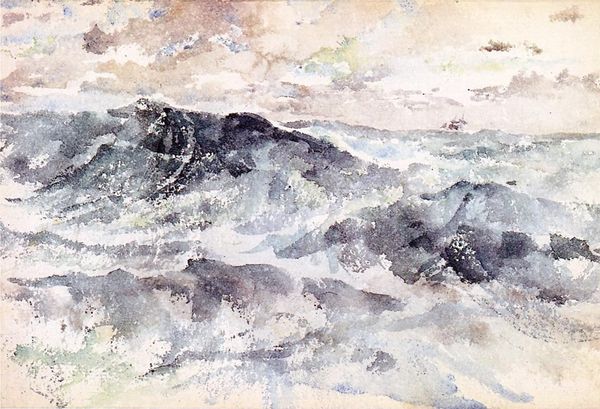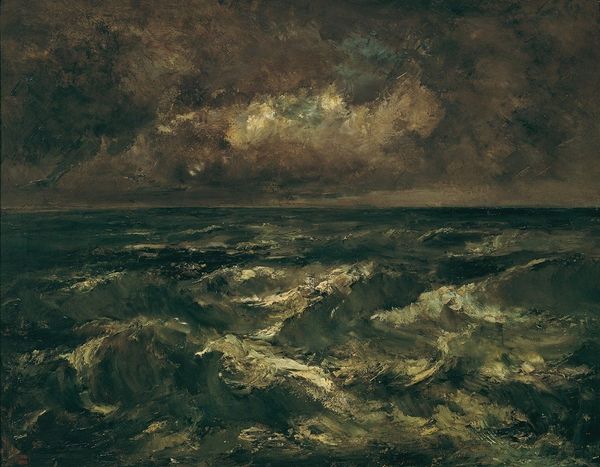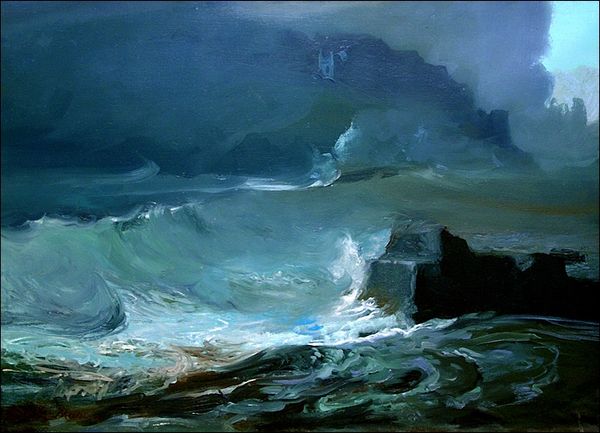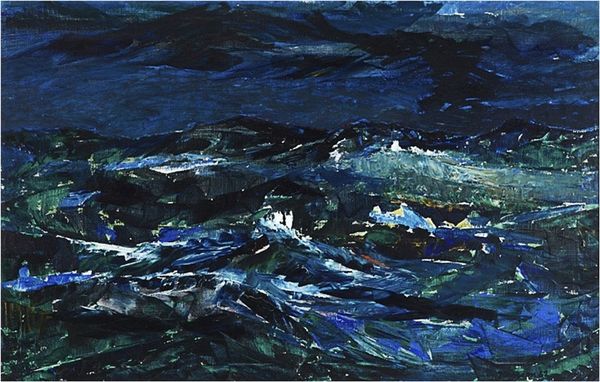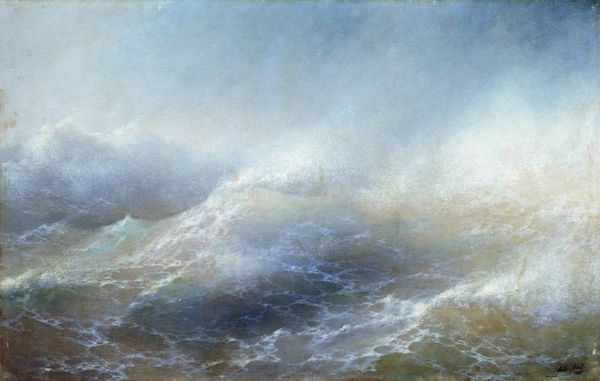
Copyright: Public domain
Editor: We're looking at Claude Monet's "Storm at Belle-Ile," painted in 1886. It’s oil on canvas, and the impasto is amazing. It looks like the sea is practically exploding off the canvas. I am curious to understand the cultural impact and what you think about the message he tries to convey with this image. Curator: Exploding is the right word! For me, it's raw energy, an almost terrifying confrontation with nature’s power. The way Monet layers the paint, thick and swirling, you can practically feel the spray on your face, can't you? Think about it – painting "en plein air," capturing that tempestuous atmosphere right there, on the spot. How much grit and determination do you need to do that? Editor: It's intense. I can only imagine trying to paint with the wind and rain in my face! It definitely has a "romanticism" feel with all the drama. I noticed that many shapes of strokes are used, does it mean anything in particular? Curator: It does to me. Forget pretty pictures – this is about something deeper, wouldn't you say? Monet's less concerned with photographic realism and more concerned with expressing the feeling of the storm, its sheer visceral impact. To be honest, this work strikes me as more symbolist than merely impressionist, don't you think? It speaks about how nature dwarfs human. This is what captures me every time I see it. Editor: It’s fascinating how different "lenses" help us perceive art from alternative points of view. What began with mere brush strokes leads to a greater sense of understanding and a richer experience. Curator: Indeed! It's that exchange, that layering of perspective, that makes experiencing art so deeply rewarding. We began with drama, then found symbols... What a blast!
Comments
No comments
Be the first to comment and join the conversation on the ultimate creative platform.
